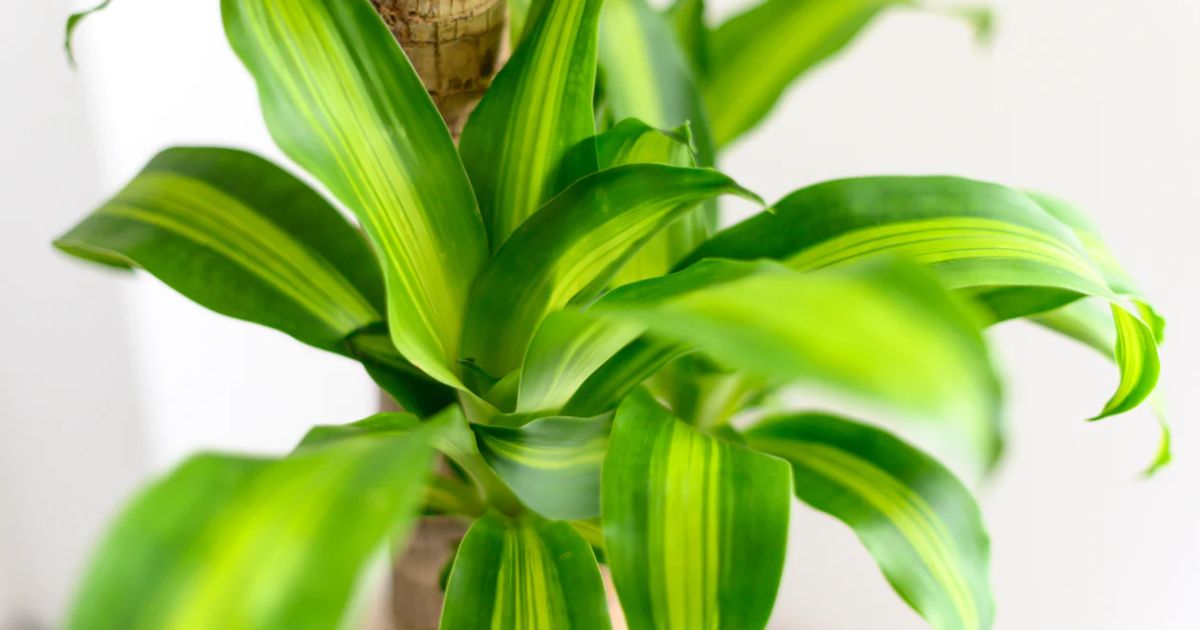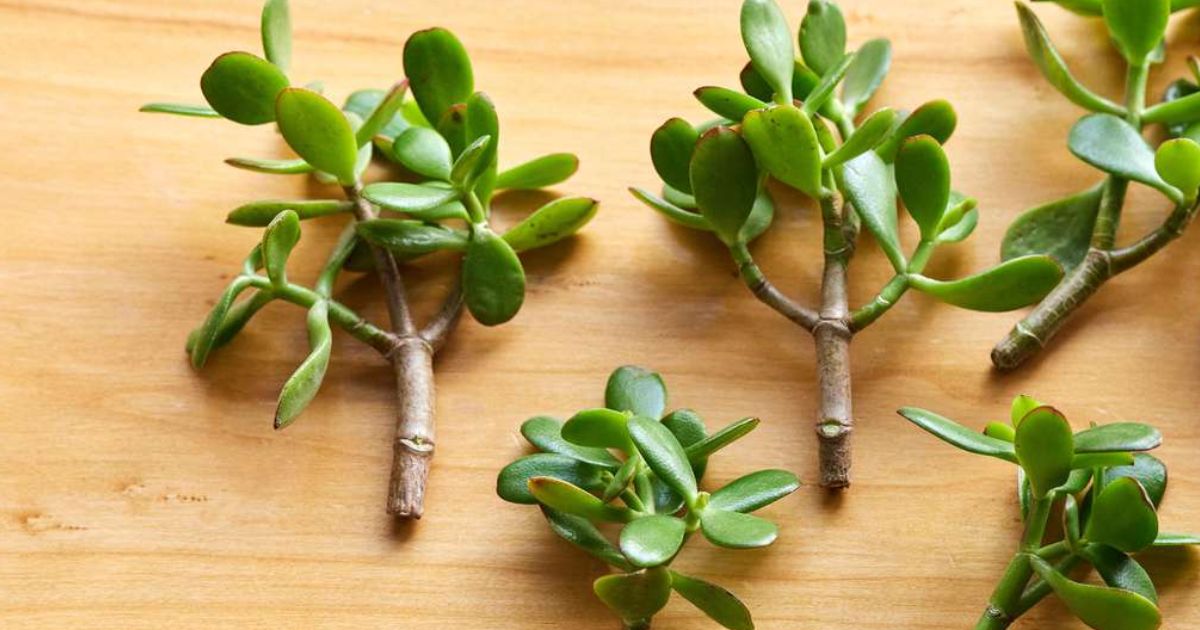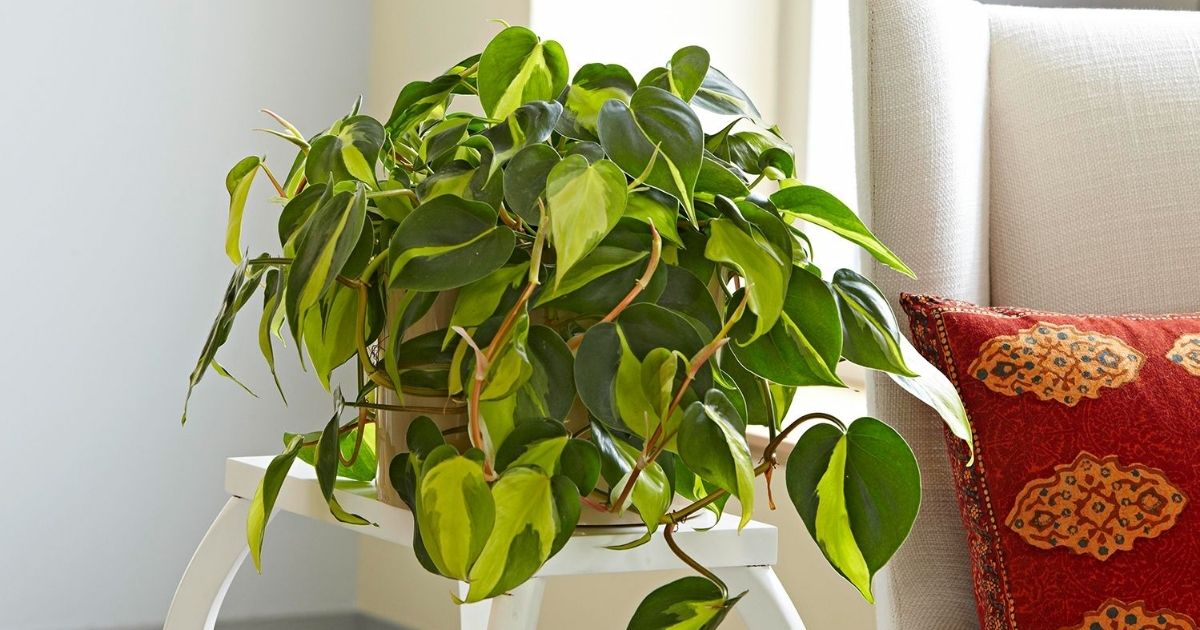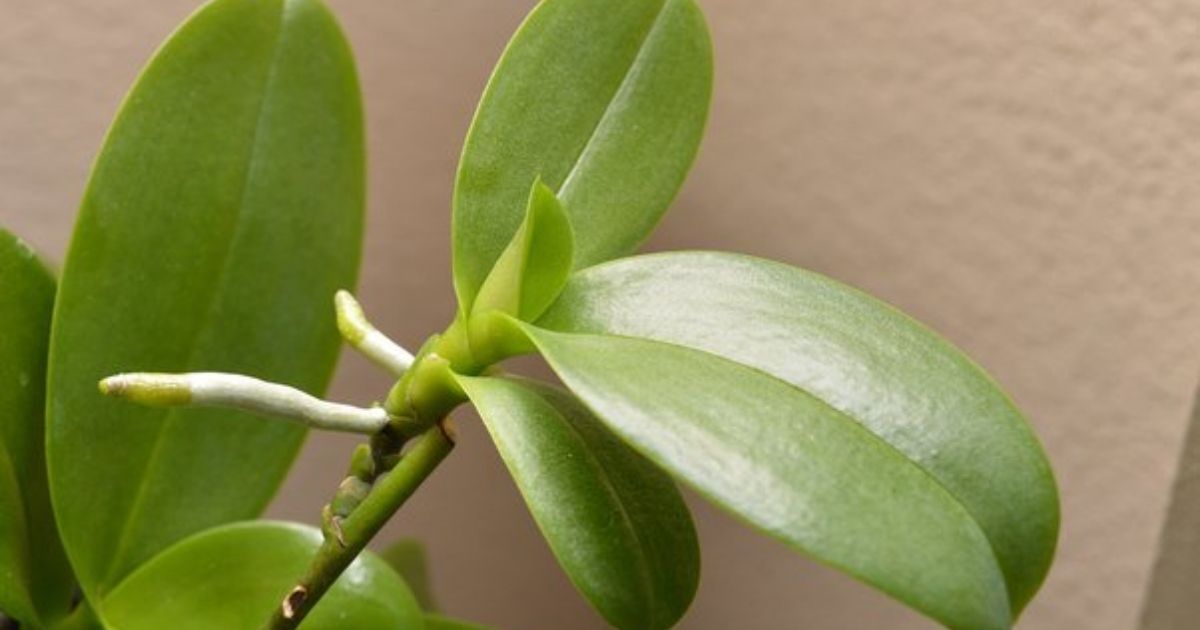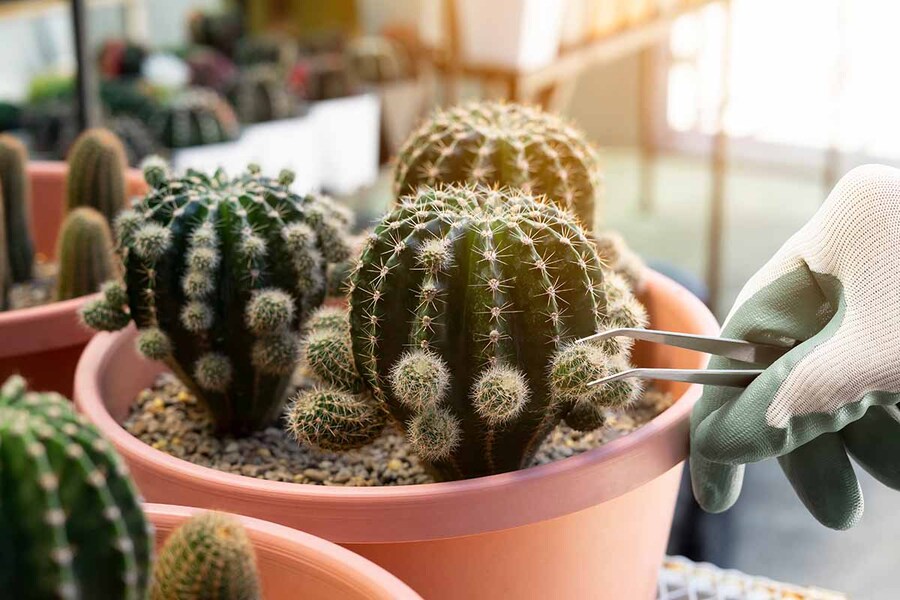How To Take Plant Cuttings With 9 Basic Steps (Expert Guide)
Plant propagation is a simple yet effective method for creating new plants. One common technique is rooting stem cuttings in water or a medium and then planting them. Avid gardeners use this method for houseplants and flowers, particularly in colder regions.
With 9 basic steps, you can quickly propagate plants from stem cuttings, allowing you to expand your houseplant collection effortlessly. Let's explore how to take plant cuttings and multiply your plants.
When To Take Plant Cuttings?
Plant cuttings, a technique for cloning plants, are usually taken during the growing season, which falls in spring or early summer. This timing is optimal because plants actively grow and have ample energy stored in their stems.
As a result, cuttings root more efficiently and develop into healthy plants, regardless of whether in types of hydroponic systems or traditional soil cultivation. Here are some general guidelines for taking plant cuttings:
- Spring or early summer: This is the best time for taking plant cuttings because plants are actively growing and have abundant energy reserves.
- Early morning: Take cuttings in the early morning when the plant tissues are fully hydrated. This can help reduce stress on the cutting and increase root successful chance.
- Mild weather conditions: If you want to reduce plant stress during cutting, choose a day with mild temperatures and low wind.
- Avoid extreme conditions: Remember to avoid taking cuttings during extreme weather conditions, such as extreme heat or cold, as this can stress both the parent plant and the cutting.
- Avoid flowering period: Avoid taking cuttings from flowering plants as they prioritise energy towards flowering rather than root development.
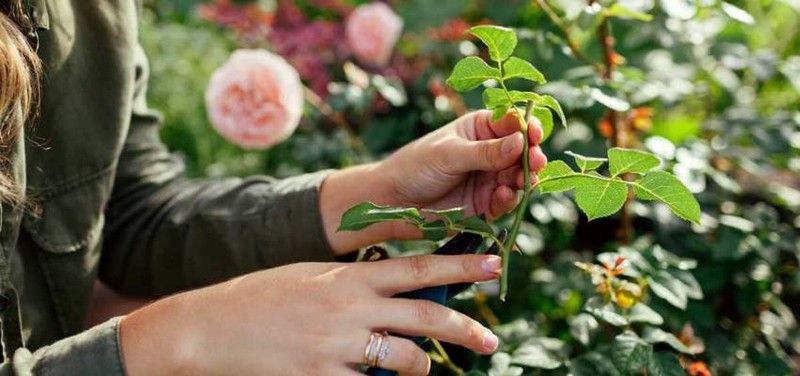
Plant cuttings are typically collected in spring or early summer.
4 Types of Best Plants To Grow From Cuttings
Here are four types of cuttings that are commonly used to propagate plants:
Softwood Cuttings
Softwood cuttings are taken from soft, new-growth plants, typically in the spring or early summer. This type of cutting is ideal for plants that overgrow and have tender stems, such as herbs, annuals, and some perennials.
These cuttings benefit from indoor hydroponic grow lights, encouraging healthy root development. Plants suitable for softwood propagation include:
- Lavender
- Rosemary
- Coleus
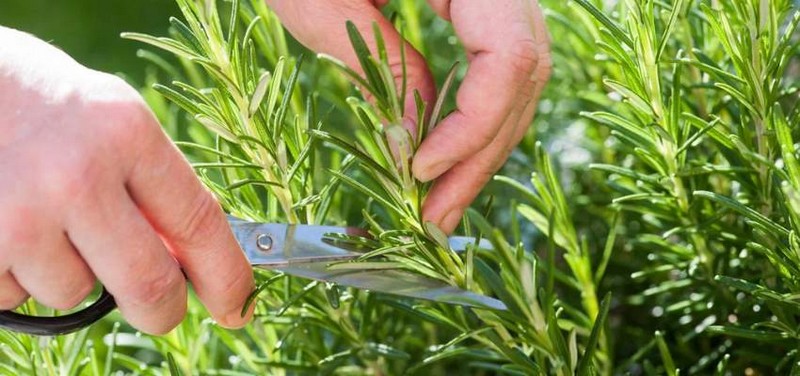
Rosemary thrives as softwood cuttings, which are ideal for easy propagation.
Greenwood Cuttings
For those interested in how to take cuttings, here's a tip: Greenwood cuttings share similarities with softwood cuttings. However, greenwood cuttings are taken from slightly older growth that is still flexible and succulent.
This type of cutting is usually taken in the late spring or early summer when the plant is actively growing and is commonly used for shrubs and trees, such as:
- Hydrangeas
- Lilacs
- Willows
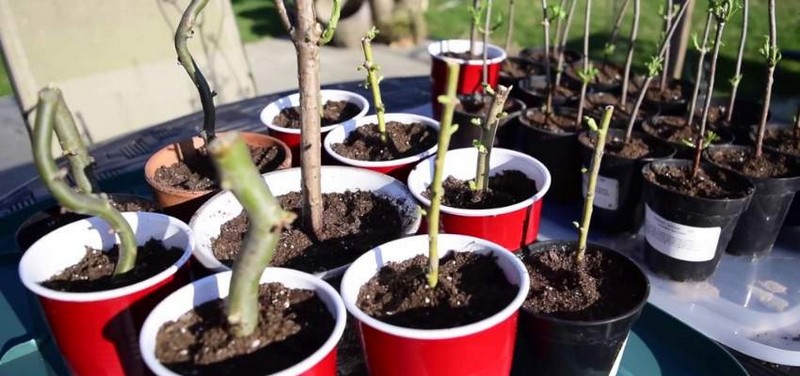
Plant willow cuttings directly in moist soil or a soilless mix for hydroponics.
Semi-Hardwood Cuttings
Semi-hardwood cuttings are taken from partially mature stems that are starting to harden off but are still flexible enough to bend without breaking. These cuttings are typically cut in the late summer or early fall.
Plants that are suitable for propagation from semi-hardwood cuttings include many woody perennials, shrubs, and some trees, such as:
- Boxwood
- Azaleas
- Hollies
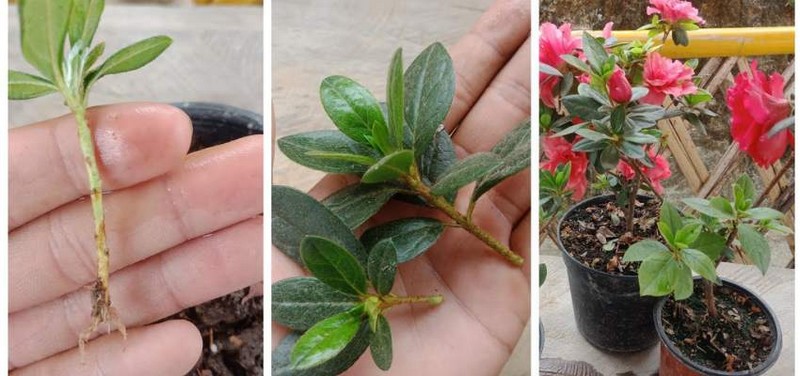
Azaleas can be easily propagated by taking semi-hardwood cuttings in midsummer to fall early.
Hardwood Cuttings
Hardwood cuttings are taken from fully mature, woody stems during the dormant season, usually in late fall or winter.
Although these cuttings may take longer to root and establish, they effectively propagate various woody plants such as trees, shrubs, and vines. Examples of plants suitable for propagation from hardwood cuttings include:
- Roses
- Grapevines
- Dogwoods
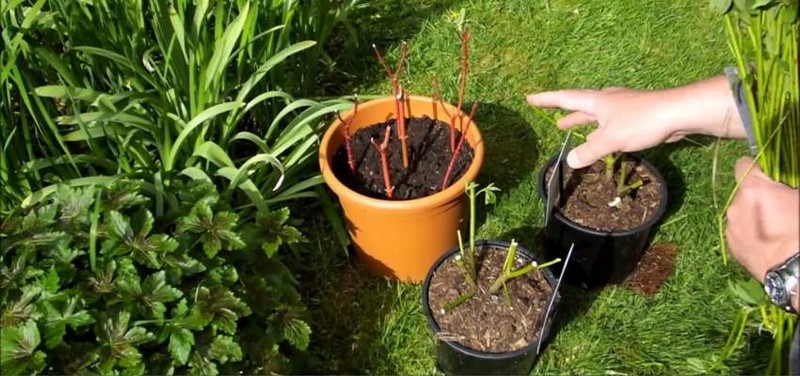
Grapevine cuttings, short stem sections, can be used to grow brand-new vines.
How To Take Plant Cuttings With 9 Basic Steps
Learning how to take a cutting from a plant is a valuable skill. You can successfully create new plants from existing ones by following nine basic steps.
Step 1: Prepare The Equipment
You'll need:
- A sharp, clean pair of garden shears or a knife.
- Clean pots or containers filled with a well-draining rooting medium such as perlite, vermiculite, peat, and sand.
- Rooting hormone powder or gel on hand (optional, but can help with root development).
Step 2: Select The Healthy Parent Plant
When choosing a parent plant for taking cuttings, prioritize healthy specimens.
Look for plants with vibrant, green foliage and robust new growth. Avoid ones showing signs of disease or withered foliage.
Ensure the parent plant is large enough that taking cuttings won't cause harm.

Pick firm, woody stems with vibrant green leaves.
Step 3: Identify Suitable Stems For Cutting
Identify a suitable stem or branch from which to take the cutting:
- Select the healthy bush with no signs of damage, such as wilted leaves or chewed holes, and no signs of disease, such as powdery mildew or black spots.
- Select a section of stem that is neither too young (soft and succulent) nor too old (woody and tough), typically around 4-6 inches long.
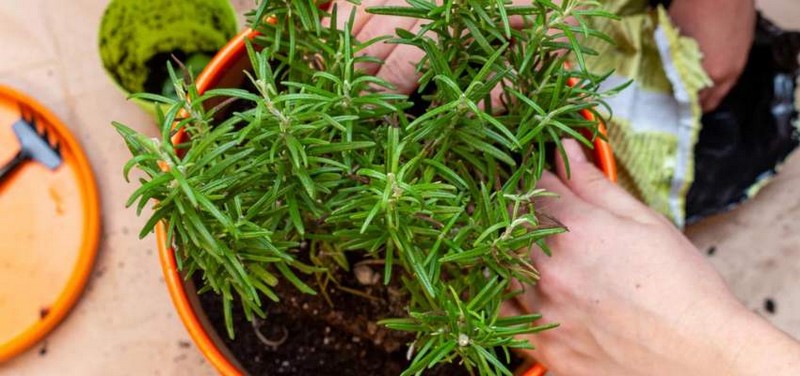
Select young or mature stems depending on the plant.
Step 4: Take Cuttings
Using sharp scissors or pruning shears, make a clean cut right below the leaf node (where the leaf attaches to the stem). This is where new roots will form.
Cut at a 45-degree angle to increase the surface area for rooting.
Remove any excess leaves from the lower portion of the cutting to reduce moisture loss and prevent rotting.

Snip 4-inch stem tips from healthy rosemary, just below a leaf node.
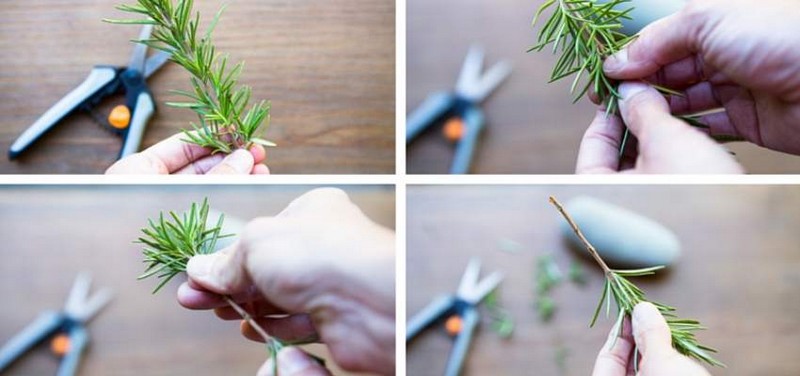
Remove lower leaves, leaving a clean stem for rooting.
- For stem cuttings: Select a healthy stem with several nodes (where leaves emerge). Use your shears or knife to make a clean cut below a node.
- For leaf cuttings: Gently remove a healthy leaf from the plant, including a portion of the leaf stem (petiole).
- For root cuttings: Dig up a portion of the plant's root system, and leave a section to attach several healthy roots.
Step 5: Apply Rooting Hormone (Optional)
If desired, dip the cut end into rooting hormone powder or gel. This can help stimulate root development, especially for propagating more complex plants.

Rooting hormone can give your rosemary cuttings a boost for faster root development.
Step 6: Create a Planting Hole
Fill a small pot or tray with well-draining potting mix or rooting medium.
Then, using a pencil or similar tool, create a small hole in a pot filled with moistened pot mix.
Tip: The hole should be deep enough to accommodate the cutting without bending or damaging.
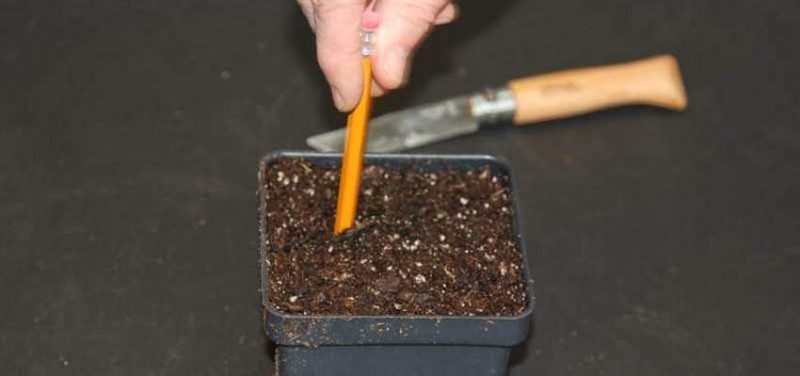
Grab a pencil and gently push it into the potting mix in your pot.
Step 7: Plant the Cutting
Insert the cutting into a pot filled with a suitable rooting medium such as perlite, vermiculite, or a mix of potting soil and sand.
Firm the soil around the cutting to ensure good contact between the stem and the rooting medium.
Make sure the medium is moist but not soggy.
Some plant species can be propagated directly in water by adding hydroponic nutrients, such as calcium, sulfur, iron, magnesium, copper, zinc, boron, manganese, etc.
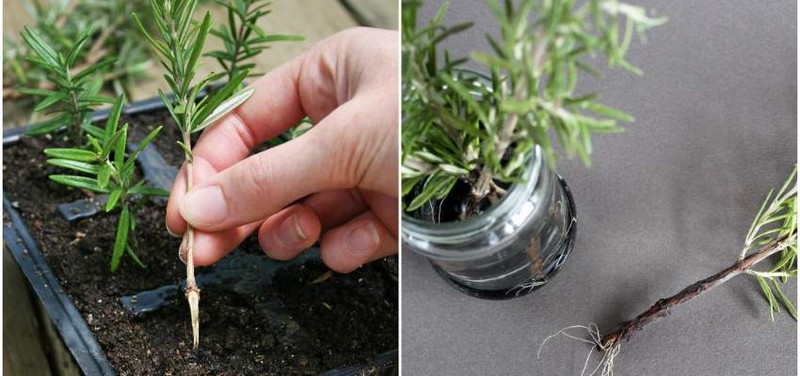
Plant cuttings thrive in either soil or water, depending on the species and your preference.
Step 8: Provide Care and Monitoring
Place the newly planted cutting in a warm, bright location with indirect sunlight.
Keep the soil consistently moist but not waterlogged by watering lightly whenever the top inch of soil feels dry.
Monitor the cutting regularly for growth and root development. Depending on the plant species and whether the hydroponic method is used, this may take several weeks to a few months.

Water your cutting when the top inch of soil feels dry to the touch.
Step 9: Transplant In The Garden
Once the cuttings establish a healthy root system, you can choose their final destination: a larger pot, a garden, or a controlled environment like a grow tent.

Choose a healthy rosemary stem and trim it for transplanting,
Conclusion
Learning how to take plant cuttings is valuable for any gardener looking to expand their plant collection. Following the nine essential steps outlined above, you can propagate many plants and enjoy watching them grow. Whether you're interested in softwood, greenwood, semi-hardwood, or hardwood cuttings, there's a method suitable for your desired plants.
Explore more insightful tips and techniques for plant propagation on Benchmark Hydroponics to nurture your green thumb naturally. Visit now for a deeper dive into plant care and cultivation!
Frequently Ask Question
How Do You Start A Plant From A Cutting?
To start a plant from a cutting, follow these steps:
- Select a healthy plant.
- Cut a section of stem with at least two sets of leaves.
- Remove lower leaves.
- Dip the cut end in the rooting hormone (optional).
- Plant the cutting in a moist potting mix.
- Keep the cutting warm and humid.
- Monitor root growth.
- Transplant the cutting once roots have developed.
What Is The Best Way To Cut Plants?
The best way to propagate plants from cuttings depends on the type of plant you're working with, but generally, there are a few methods commonly used:
- Stem Cuttings: Suitable for many plants, including herbs, shrubs, and trees. Cut a stem section with at least one leaf node, remove lower leaves, and plant in a suitable rooting medium.
- Leaf Cuttings: Ideal for plants with succulent leaves, such as African violets and jade plants. Detach a leaf from the parent plant, allow it to callus over, and plant it in a moist growing medium.
- Root Cuttings: Commonly used for plants that produce thick, fleshy roots like mint and horseradish. Cut sections of roots into pieces, ensuring each piece has at least one bud, and plant in soil or a rooting medium.
Choose the method that best suits the plant species you're working with, and ensure you provide the proper environmental conditions for successful rooting.
Can I Plant Cuttings Straight Into The Soil?
Yes, you can plant cuttings directly into the soil, but using a well-draining potting mix is essential to avoid waterlogged conditions that can lead to rot.
Ensure the soil is moist but not soggy, and consider using rooting hormone to encourage root development.
Keep the soil consistently moist until roots form, and provide appropriate care based on the specific needs of the plant you're propagating.
